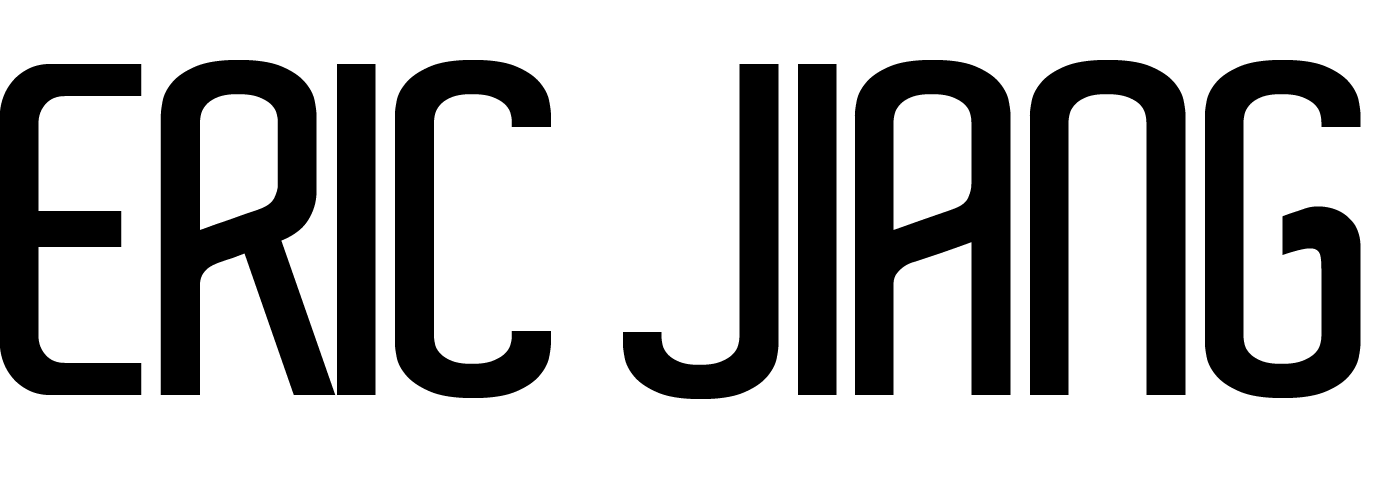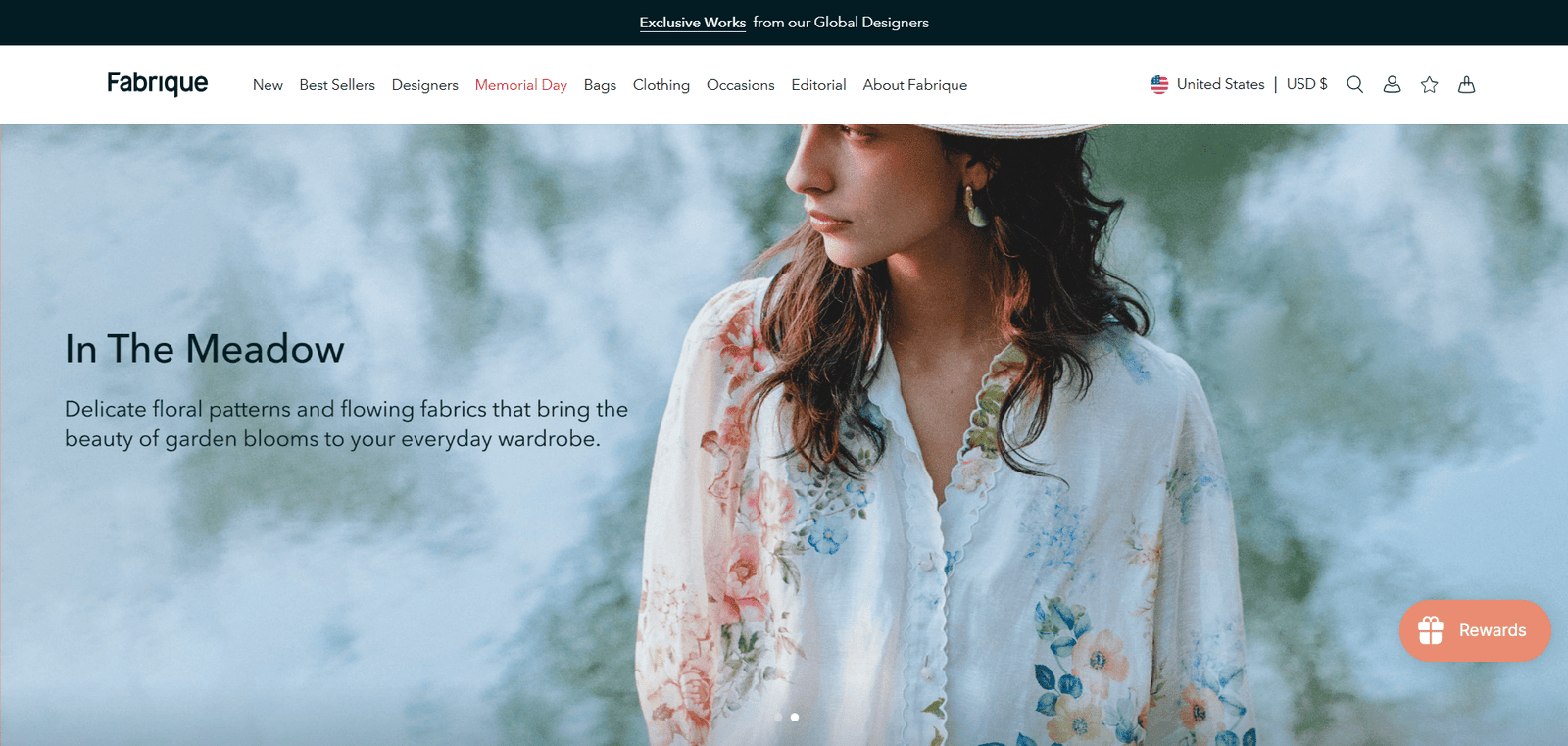The four-year-old platform is growing quickly and considering many strategies behind its designer partnerships including Hussein Chalayan and Sébastien Meunier.
By Eric Jiang
I heard about Fabrique a few years ago when the platform was still in its infancy. I was sceptical of this new model at first for one simple reason – it was incredibly ambitious. The idea was great: a winning formula that would mobilise the creative power of global designers and China’s efficient and price-competitive supply chain, and then cut out the high costs of brick-and-mortar retailers by selling through e-commerce. However, realisation is tough. Fabrique develops product ranges by negotiating with designers who vary in nationality, culture, personality, as well as in style and approach. Added to that, there’s the cost of communication. Operating just on an App to build an original customer base can often lead to unnatural traffic for two reasons. First, to keep users engaged on it for a relatively long time, it must involve fulfilling their essential and psychological needs, generating high-frequency usage, and most importantly, providing a channel for socialisation. Second, many startup companies, like Fabrique, choose the vertical market as their online entry point, and oftentimes can lead to bottlenecks in user range. Economically speaking, the business might fall into a situation of excess supply. It’s one thing to discuss these strategies but executing them is far more complex.
The platform was co-founded by Natalie Wang and Jing Li in 2020. Once a reporter for China Central Television’s English Channel, Natalie majored in English Broadcasting at the Communication University of China, and later obtained a master’s degree in Journalism from the University of Hong Kong; Jing, a veteran media personality, previously served as Vice President of Laurel Films, an independent production company based in Beijing.
Although both were considered fashion outsiders, they delivered a prolific breakthrough with Fabrique. The mobile app launched in September 2020, followed by openings on Tmall and Douyin (the Chinese version of TikTok) the next year, and JD Luxury the year after that. In just four years, Fabrique has collaborated with over 300 designers globally, achieving a business scale exceeding 1 billion Chinese yuan (108 million pounds). According to Tmall shop data, the brand has amassed 1.18 million followers in three years – a remarkable accomplishment that even long-established brands with exclusive channels must take notice of.
“We informed the designers from the very beginning that many brands seek collaboration primarily for branding purposes, whereas we are trying to make it our main product; it’s fundamentally different, and we hope to build long-term partnerships.” Jing tells me via Zoom from Fabrique’s headquarters in Sanlitun, Beijing. “We’ve always believed in the power of design from day one. Their names appear on every piece of clothing, every product page, and on the postcards that consumers receive.” The design-driven philosophy is evident in the details. Not only do Jing’s words prove to be true, but the collaboration is titled “XYZ with Fabrique”, instead of the typical “Fabrique by XYZ”, allowing the platform to take a humble back seat to the designer.
The colossal lineup is beyond impressive; there’re names that have been etched in fashion history like Hussein Chalayan who designed a grey structured broad-shouldered coat in sheep wool, priced at 3980 Chinese yuan (430 pounds) as well as emerging talents such as Matthew Adams Dolan who has been shortlisted for the LVMH Prize. Sébastien Meunier, who has served for a decade as the creative director after the retirement of Ann Demeulemeester is also on the list, alongside those who have contributed to the design teams at Hermès, Chanel, and The Row. Meunier’s recent creation is a 2390-Chinese-yuan (260 pounds) trench coat in vegan leather.
Fabrique takes great pains to create profile videos for each one. They are featured at the very top of the product pages. “The insights you get from those videos shouldn’t be underestimated; prior to making a purchase, we invite users to see what their designers look like, as well as to learn about their career and inspirations,” Jing adds. There are also silhouette and fabric analyses, size recommendations, and corresponding lookbooks. It’s also worth mentioning that searches indexed by designers are prioritised over category searches. Such particular directives to the consumer psyche not only subconsciously cultivate the user’s’ attention, but also truly connects them to the design itself.
In the first season, there was a sense of fearlessness typical of newcomers. Fabrique featured only three designers: Pascal Millet, who had worked at Givenchy; Jean Paul Knott, who designed for YSL’s Rive Gauche collection; and haute couture master Stéphane Rolland. Together, they produced over 20 pieces.
When Fabrique reached out to them, they all acknowledged that the current climate is making business more volatile. However, as Jing recalls from their conversations, “business is the cornerstone of creativity, and if business is unstable, then creativity won’t be stable either.”
“They were looking for a business that would serve as a gentle soil to help them grow, not a hungry wolf that voraciously devoured their creativity,” she adds. “We made sure Fabrique was a safe environment where they could find the right audience that appreciated their designs.”
“Whenever we meet up with Christelle Kocher, [both the founder of Koché and the artistic director at Maison Lemarie], she’d always emphasise that us being two women behind Fabrique enables her, as a womenswear designer, to be more aware of the female consumption patterns,” says Jing. “It also leads her to create high-quality democratised clothing that empower women to express their diverse selves.”
Despite some initial challenges, such as the trouble of getting people to download an app just for the sake of 20-odd styles, they remained optimistic. “The moment we received feedback from our first users, I knew that we had hit the right note and met their needs,” says Natalie.
Early users of Fabrique would discuss what they had purchased on social media, which led the duo to understand that there’s a significant number of Chinese consumers who would consider both the price and a piece mentioning the designer’s name. The strategy was proven early on: Natalie would visit factories in China, enquiring into the prices of major international brands, while Jing communicated with designers abroad, noting that overly low pricing would prohibit some of the fabrics and techniques from being materialised. The two thus reached a consensus and set a mid-to-high-end price range well above the average domestic ecommerce brands.
The number one selling item now is an overlock stitch hooded coat in alpaca wool twill designed by Solal Fabre who’s now the chief runway designer at TOD’S and priced at 2940 yuan (318 pounds). Second in sales is the Coddenham jacket in faux suede for 1590 yuan (172 pounds) from the design duo Fiona Sinha and Aleksandar Stanic, who were the creative directors behind McQ, the now-defunct secondary line for Alexander McQueen. Third place goes to a pullover sweater in wool blend bouclé knit for 1340 yuan (145 pounds) by Jesper Börjesson, ARKET’s co-founder.
“Requirements coming from designers vary widely, and even now, we’re all still working on them, and can’t afford to say that complexities of a supply chain have been completely resolved. But one thing we do insist on is that Fabrique has no product planning,” Natalie emphasises that Fabrique clearly goes against the indoctrinated approach, which has the planning prioritised. “We only have the vaguest of plans for larger categories – a couple of big pools. What exactly are the designers creating? We really don’t know until they finish their designs that we endeavour to fit into our big pools.” She continues, clarifying the rationale: “there’re no limits to how many pieces each designer can showcase on the platform. It’s totally up to the designer to decide how many ideas they wish to execute.”
Fabrique has adopted the tactic of stocking up on over 200 suppliers to accommodate the diverse fabric demand. Most of them produce synthetic blends, suitable for the price range. “It’s quite inconceivable – there might only be four or five suppliers for other Chinese womenswear brands,” Natalie says.
“However, we decided that it may be best to work with domestic suppliers with a strong international reputation. They have some of the time-honoured global standards that are part of our ethical commitment to designers, and we share all the necessary information with them immediately after they finish with their sketches, so there’s transparency at all times,” she goes on without disclosing a list, though citing one of their most frequent suppliers as an example – The Shanghai Challenge Group.
Established in 2001, the company specialises in mid-to-high-end weft-knitted fabrics and has formed stable joint ventures with many brands both at home and abroad, including Eton Kidd – a Chinese schoolwear label, Icebreaker – a subsidiary of VF Corporation, The Woolmark Company, and Nike. “We mainly source from them the Merino-Trevira blend. The fabric has an ultra-soft touch and is both flame-retardant and moisture-absorbent; it has been used extensively on coats,” Natalie explains.
The company also plays a tremendous role in minimising negative factors affecting the environment and practising sustainable development. Bio™ Performance Fabric, developed in conjunction with PrimaLoft, a leader in synthetic insulation, is derived from an advanced fibre technology that accelerates biodegradation in circumstances such as landfills and marine ecosystems. It has been scientifically validated to be chemically regenerateable from polyester. The process reverts polyester back to its fundamental components and restores its natural properties, allowing it to be re-circulated over and over again without any loss in performance. “Apart from puffer jackets, we don’t have much functional wear. We do have an agenda in place into that area and are currently negotiating with Keita Ikeuchi and Mihoko Mori, [two ex-Issey Miyake designers behind And Wander], to bring a few cold-season pieces using PrimaLoft® Bio™,” Jing tells me.
The company has erected a 3MW photovoltaic solar power plant, which reduces carbon emissions by approximately 1,260 tonnes. The gas boilers have also been retrofitted with oxygen-enriched catalytic combustion for energy saving, decreasing about 436 tonnes of CO₂ emitted.
Following the commitment to environmental responsibility came several accolades. The company has been recognised by the Ministry of Industry and Information Technology as both a ‘Green Factory,’ and a ‘Green Design Demonstration Enterprise for Industrial Products’ on a national level. The Shanghai Municipal Government has also honoured it as one of the very first ‘Waste-Zero Companies’ in the city.
“We are fully aware that the younger generation in China is now becoming more conscious about social justice issues within the fashion industry and therefore we are compelled to post relevant information about our suppliers online for our users to view, in a lawful and non-political manner,” says Natalie.
The emergence of Fabrique has created a feasible platform for struggling designers to launch their commercial collections. Between being recruited by a conglomerate or striving to survive as entrepreneurs, Fabrique offers designers a third and more liberating option, unleashing their ingenuity. They can be solely focused, free from the burdens of managing a team, worrying about marketing strategies, or chasing the industry’s ever-shorter fashion cycles.
“At Fabrique, we don’t consider design as fleeting. The term ‘out-of-season’ simply doesn’t exist, nor do we offer regular seasonal discounts or promotions,” Natalie comments.
Jing sums up Fabrique’s collaboration with designers as a form of companionship: “Every designer, from the moment they finalise the contract to the finished product, is accompanied by a whole team to help them address challenges. The people who interface with these designers are also designers themselves.” Fabrique’s network of designers worldwide connects with their respective teams online, where a single pattern can go through dozens of readjustments. Eventually, the samples are sent across the ocean to the designers for approval.
taining product freshness while controlling inventory build-up has become a critical factor, determining the survival of a fashion brand. Fabrique’s approach is to make frequent small batches and introduce new items weekly on Thursdays, a strategy similar to that of fast fashion brands. It puts me in mind of Zara, which over the past few decades has been credited with redefining production and distribution in the global fashion industry, fundamentally revamping consumer behaviours.
Zara’s parent company, Inditex, was founded in 1985. At that time, it was far from being a fast fashion behemoth, but while the fashion industry generally adopted a retail formula of releases in spring and autumn with replenishments throughout the year, Zara had already pioneered in small-batch restocking. They would only send up to four pieces of each style to each shop, resulting in hardly any surplus inventory. Shop managers surveilled customer satisfaction and made restocking decisions depending on their buying patterns. The cycle was optimised and compressed to the shortest possible time, from production to the shelves in just two to three weeks.
“We are really trying to learn from Zara and pursue a similar method of quick order turnarounds,” Jing says, adding “people don’t understand why we created Fabrique when fast fashion like Zara is still as good as it gets. Isn’t buying Zara more appealing? That’s the question we often get asked.”
Fabrique usually prepares an inventory for about one month’s worth of sales. China’s well-engineered supply chains and logistics platforms are now in the driver’s seat, but the mid-to-high-end positioning makes it impossible for Fabrique to achieve the same speed at which Zara does. Jing explains, “our turnaround time comes from operational efficiencies, as well as an agile and responsive presence both online and offline. We allow enough time for products to be made as they need to be made, but orders are placed in advance.”
“The self-developed mobile app is key here, as it provides data that enables us to anticipate,” Jing continues. The user data accumulated by the mobile app is far sharper than feedback from shop managers. What products customers purchase for, which styles they click through, what product pages they stay on, and which items they save as favourites, all become a solid data analysis repository for restocking.
“Fabrique might have learnt from Zara’s speed, but it’s not Zara; it’s not fast fashion either – it’s even the antithesis of fast fashion in our regard. What it does is fast-paced slow fashion,” Jing says.
In a separate development, Fabrique has introduced a full-sizing intelligence system from day one, incorporating not only the daintier fits for the domestic market, but also providing automatic matching for 14 various sizing entries. Special sizes may require a pre-order wait, but a few days to two weeks of the receipt period makes acceptance a no-brainer. In an era when Zara’s expansion into the U.S. market has been constantly hindered by sizing issues, Fabrique’s move, although an active aggravation to production complexity, has since its inception been endowed with strong IT-driven mindsets that made the implementation possible.
It is probably appropriate to say that Fabrique is as much a tech company as it is a fashion one; after all, China has some of the world’s leading e-commerce and payment platforms, a highly digitised consumption culture with relevant transitions embedded in its national pact. However, I wonder if the IT thinking behind its business model will slowly replace and obliterate individuality going forward?
Natalie seems at ease as she confidently responds, “ultimately, we are all about improving efficiencies through data-driven decision-making and a fast integration of assets, but we don’t rely on them heavily.” She then refers to the old school method of visiting designers in person and gathering mutual understanding over time, as opposed to leaning on a predetermined database of matches. “If it’s treated as a method rather than an end goal, it can become a useful tool in favour of creativity.”
“The mixture of emotion and reason can open up tremendous spaces for niche designers who are being pushed into increasingly narrow corners,” Jing says.
Not taking shortcuts and reaping profits with simple paradigms may be the secret of Fabrique’s success in a short period. Fabrique doesn’t squeeze the design costs upstream, including the financial and communication costs incurred for originality; the production costs and time in the midstream are also not slowed down. By honouring the irrevocable foundations of the fashion industry and innovating the means by which it can be changed, Natalie and Jing are forging a promising trajectory for Fabrique.
This year, they took a step towards globalisation by starting an e-commerce franchise in the United States, with little fanfare or advertising, but gained a group of entrepreneurs and content creators worldwide such as Danielle Berstein of WEWOREWHAT, Yevgeniya Topyer-Krist of Muse Rebelle, and Giannina Milady Gibelli from Love Is Blind. “We opened an Instagram account for Fabrique back in early 2023, and by the time we entered the U.S. market a year later, we already had with us some regular clients.,” says Natalie.
Tapping into the U.S. was executed in partnership with the Vanzbon Group, a consulting company based in Shenzhen that supports small-and medium-sized enterprises, looking to grow overseas. A study by Tinuiti, a NYC-based marketing firm shows that 400 out of every 1000 Americans have purchased clothes from Temu since entering the U.S. in September 2022, with 52% of Gen Zers and 72% reporting satisfaction. “These figures just proved that the consensus in the West remains that China is this universal manufacturer for incredibly low-priced clothing. It’s time to change that narrative,” Jing adds.
Fabrique neither deliberately publicises itself as a Chinese brand nor hides that it is one. “We just ship everything from Shanghai, and it’s clearly printed on the shipments.”
Until now, no Chinese mid-to-high-end fashion has succeeded in the global mainstream, and Fabrique has never claimed to be a game-changer, but with an international frame of vision, change may be afoot.


